News Article?
Small Steps, Big Outcome.
There are many factors to consider when deciding whether to brand something new or rebrand something old. Here are some of the factors that can influence the decision:
Branding to fill a market gap.
It has been said that some of the best products and services have been created when someone spots a gap in a market that they can fill with a new product/service. However, some innovations also created markets for products people were unaware they needed. (Walkman & iPod)
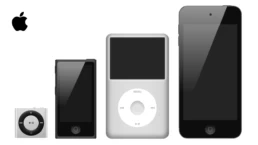
Corporate change forces rebranding.
An acquisition or merger of two or more existing companies. Rebranding is necessary in order to reflect the changes that are made to the organizational structure, product line, or target market. It helps to ensure that customers, investors, and other stakeholders are aware of the new developments and that the company is seen as a single entity.

Reflection on company structure re-alignment.
In the past few years, you have successfully established a business and have had to restructure the business in order to meet new standards (or as part of the learning curve). In rebranding (or as we like to call it - Brand Standardisation), you aim to align the way your existing and potential customers perceive your brand.
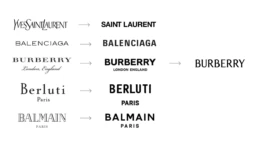
Forced by performance.
In some cases, a lack of customer awareness can lead to brand identity changes or name changes. For brands that have been unsuccessful, starting again can help give a second chance or may present as the final throw of dice in customers' eyes.
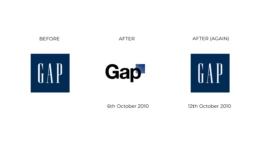
Need to simplify.
By human nature, we tend to truncate people's names; many brands are now doing the same with their brands. It is a smart move for brands to get closer to their customers by doing this. Dunkin' Donuts became Dunkin', The Metropolitan Museum of Art became The MET, and what about Facebook? It surrendered to the inevitable...

Forcing a change of perception.
There's a very strong reason why countries & cities develop their tourism brands and 'destination' names; they believe that by presenting themselves in a fresh and distinct manner, more visitors will be likely to be attracted to check out their destinations.

Rebranding seems more relevant and authentic.
Essentially, a rebrand gives an organization a new perspective on a company that has presented itself in the same way for years. Old is gold, but it's a new world out there, and what once was isn't always the same. As technology and time continue to change faster, existing brands cannot afford to stick to their old methods in order to compete with the new and upcoming.
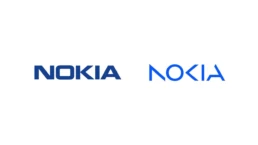
Our lives have become so dominated by brands that we take to extraordinary lengths to bask in the status they seem to possess. Brands have to create new experiences, embrace evolving technologies, and come up with creative strategies to stay relevant. If they don’t, they risk losing out to their competitors and being left behind. In sum, brands must stay ahead of the curve and innovate to succeed in the ever-shifting market.
New Certification
How did branding come to be?
A logo or trademark was not considered branding in the past; the term did not have the meaning of today; it was merely the owner’s signature on the corner of their packaging. In the year 1266, a man registered the first trademark (Bass & Co’s Pale Ale) which paved the way for branding as we know it today. In the aftermath, companies formalized their symbols, corporate ‘signatures’, and ‘brand names’.
In today’s world, the business of designing a logo or choosing a trademark precedes branding. The consistent presentation of a company’s visual identity was given a new and logical term in the mid-20th century – corporate identity – and in the hands of a great designer, a new profession and title was born, “Graphic Designer”.
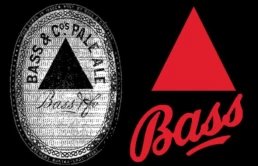
So what is the definition of branding?
Many people think branding is just visuals and company name. But for those who know more, they see it as a team seeking a common goal. That could mean many things! So let's break it down:
Visual Identity, Symbol or Trademark
“A brand is a name, term, sign symbol or a combination of these that identifies the maker or seller of the product”
– Philip Kotler and Gary Armstrong
There are many things that make up a brand – colors, symbols, art, name, tags, products/services, voice, tactics that appeal to the subconscious mind of the consumer.
It is most common for people to relate to brands based on their visuals which consist of symbols, type, and colors that are consistently applied to make it stand out from its competitors.

2. Consumer Perceptions
“Your brand is what other people say about you when you’re not in the room”
– Jeff Bezos
Think of a brand you like and why you are loyal to it. Why do you like that particular brand? Why did you choose it?
There may be more to your memory of a brand than how it presents itself.
You may find yourself connecting to their goals (WWF taking action to save wildlife), or maybe you enjoy the product itself (Iphone by Apple Inc.), or maybe you love how they make you feel (Nike encourages their customers; “Just Do It”), or maybe you have a personal connection with the brand (Coca-Cola’s “Opening Happiness” or the sound of the opening bottle could do it).

3. Promise or Contract
“A brand is the set of expectations, memories, stories and relationships that, taken together, account for a customer’s decision to choose one product or service over another…”
– Seth Godin
People develop brands as a result of an event or a thought that makes them realize they have found a solution to an existing problem. Brands that convey this message loudly and clearly usually have a history of loyal customers (our favorite example here is Naarica).
Branding allows individuals who share the same goals, mindsets, problems, or seek solutions can depend on a consistent, caring, and memorable business.

4. Vision, Values & Action
“[It’s] about values. It’s a complicated and noisy world; and we’re not going to get a chance to get people to remember much about us. No company is. So we have to be really clear about what we want them to know about us.”
– Steve Jobs
There are a lot of brands in the market today that stand for a single dream; what you tell your customers daily about your brand is what you stand for – it’s how people learn about your brand and build loyalty to it.
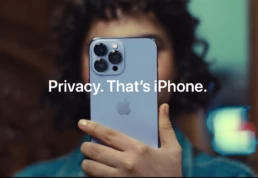
5. Social Grouping
“It’s about belonging: belonging to a tribe, to a religion, to a family…”
– Wally Olins
Branding has many definitions. It comes together as a group of people who share a vision, can rely on promises, are working towards resolving a problem collectively, agree on actions to take, and more; they come together to form a community we know by their visuals, symbols, and trademarks – A BRAND.
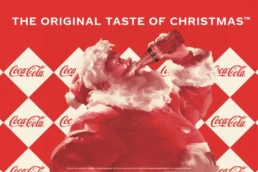
Ultimately, a brand is more than a visual representation of who they are, what they are saying about themselves, how they act, how they treat their customers, what products or services they have to offer. It is a combination of all these factors that help build a real brand that can be related to by those who share the same opinion.
As a concept, branding can be a real game-changer. The term itself has been described in many different ways and has grown to become a wide-ranging discipline in recent years. In addition to increasing sales, branding can also influence people to follow a similar goal or even take action on behalf of the brand. You have to be able to present yourself effectively if you want to succeed in all of these areas and it all boils down to “Branding”.
Our Story
Is the meaning of your brand name important?
When we think of “Brand” we have many of our own favourite brands that we associate with daily that pop up in our minds. Is it because of the brand name or the meaning the brand gives to the name?
Let’s simplify that. Apple doesn’t sell apples. Cannon doesn’t shoot cannon balls. What does Pepsi or Rolex mean? The point being, the meaning of the brand name is defined by you.
In a world full of competition and growing so fast with technology and new inventions, it is imperative to stay at the top of it all. This means your brand has to constantly adapt to its surroundings, so how can you ensure people remember you 10 years later just like they would today?
The name of your brand actually holds very smallvalue unless you build it up by educating the public about what it stands for. This includes its meaning, your products or services and most importantly, the connections you make and maintain with your customers over years.

So what gives meaning to the name you choose for your brand?
Let's break it down.
The Story
Every brand comes from a story. As the first event or situation that prompted you to think about solving a specific problem for others around you through your new product or service, the brand name takes on meaning. Successful brands are built on stories. They enable customers to connect with their brands, understand their values, and what makes them unique. Sharing this story with customers is the heart of any brand.
The Appearance
How you present yourself is the second aspect of your brand name. A brand must dress a certain way based on the types of people it plans to interact with just like you dress casually for brunch on Sundays or in a gown/suit to fit the mood at a cocktail party. The use of fonts, graphics, colors, and other elements to convey your story to the audience. By creating a strong visual identity, people can recognize and remember your brand name. The visuals associated with your brand should be consistent to create a unified presence and a positive impression on your target audience.
Your Message
In many ways, the brand name is a visual or short name for your brand message. For example, when you think of Nike, you remember their message "Just do it" or when you think of Coca-Cola you immediately think of "Opening Happiness". A brand message isn't necissarily the tagline or slogan of the brand but what it implies. So if you are a brand with an aim to remove all plastic waste from the world's oceans you may have a tagline that relates to the mission. For example, "Our Ocean, Our Home." Through various campaigns and interactions people will form a connection with the brand name when they can relate to the emotions your brand carries. When customers are emotionally connected to your brand, they are more likely to become loyal and enthusiastic supporters. This connection is also an effective way to boost your brand's visibility and reputation, as customers are more likely to recommend your brand to others. Ultimately, this gives more meaning and value to your brand name.
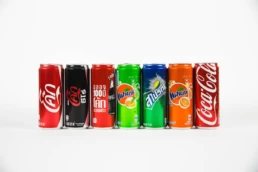
So, what makes an effective brand name?
While there are many aspects to giving a brand name its meaning, making sure people remember the name is important. You can find the right name by asking yourself these simple questions.
-
Is it easy to remember? (Short and sweet is always nice but not necessary)
-
Is it easy to pronounce? (Words with max 1 – 2 syllables and start and end with vowels are most likely to be remembered faster)
-
Does it leave space for business growth and expansion opportunities moving into the future? (Don’t restrict yourself to a specific word – you may be working with teeth today but who is to say the brand won’t work with gums in the future?)
-
Does it feel like it sounds? (If you’re a brand that cares about helping people get discovered for their talents, you probably don’t want to be called “Caricaturists”)
-
Is it relatable to the target audience? (There’s no rule about brand names being descriptive but if you run an animal shelter, you probably don’t want people to call you “The Butcher” and rather be called “Paw Care”.)


